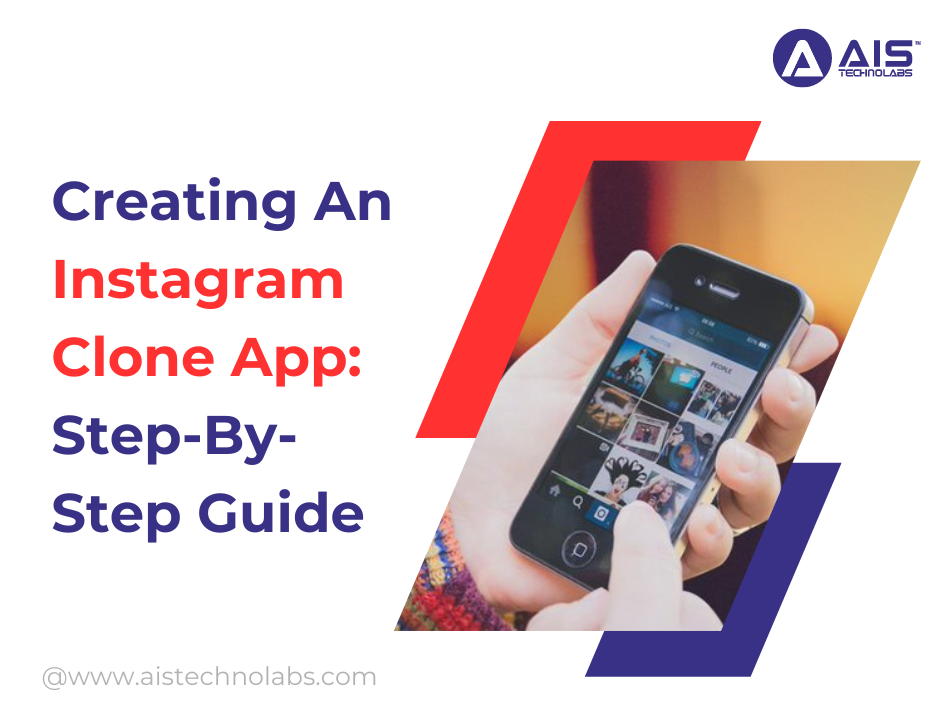Creating An Instagram Clone App: Step-By-Step Guide
- AIS Technolabs

- Sep 3, 2021
- 3 min read

Introduction:
In today's digital era, social media platforms have become an integral part of our lives. Among them, Instagram stands out as one of the most popular platforms for sharing photos and videos.
If you have ever wondered how to create your own version of Instagram, commonly referred to as an Instagram clone app, you've come to the right place. In this step-by-step guide, we will walk you through the process of creating an Instagram clone app, from scratch.
Step 1: Define the Scope and Features
Before diving into the development process, it is crucial to define the scope and features of your Instagram clone app. Take some time to research and analyze the functionalities of the original Instagram app. Identify the essential features such as user registration and authentication, photo and video uploading, feed display, liking and commenting on posts, following and unfollowing other users, and direct messaging.
You can also consider additional features like filters, image editing tools, and user profiles. Clearly defining the scope and features will help you stay focused during the development process.
Step 2: Set Up the Development Environment
To begin developing your Instagram clone app, you need to set up your development environment. Firstly, make sure you have a computer with a stable internet connection.
Then, choose the appropriate technology stack based on your skills and preferences. For the front-end, you can use popular frameworks like React or Angular. For the back-end, you have options like Node.js, Ruby on Rails, or Django. Set up the necessary tools and libraries for your chosen technology stack.
Step 3: Design the User Interface
The user interface plays a significant role in the success of any app. Start by sketching wireframes and designing the visual components of your Instagram clone app.
Pay attention to the color scheme, typography, and overall aesthetics to create an appealing user experience. Use design tools like Sketch or Adobe XD to create high-fidelity mockups. Once you are satisfied with the design, proceed to the development phase.
Step 4: Develop the Back-End
Begin the development process by building the back-end of your Instagram clone app. This involves creating the server-side logic, database schema, and APIs. Implement user authentication and authorization using technologies like JSON Web Tokens (JWT) or OAuth.
Set up a database management system, such as MySQL or MongoDB, to store user data, posts, and other relevant information. Build APIs for user registration, login, post creation, feed retrieval, and other functionalities.
Step 5: Implement the Front-End
With the back-end in place, it's time to focus on the front-end development of your Instagram clone app. Use your chosen front-end framework to create the user interface based on the design mockups. Implement the user registration and login screens, home feed, profile page, post creation, and other required features.
Integrate the APIs you developed in the previous step to fetch and display data from the back-end. Ensure a smooth and intuitive user experience by making the interface responsive and interactive.
Step 6: Add Additional Features
To make your Instagram clone app stand out, consider adding additional features that enhance the user experience. Implement image filters and editing tools to allow users to enhance their photos. Include push notifications to notify users about new likes, comments, or messages.
Enable the option for users to follow and unfollow other users, as well as the ability to like and comment on posts. You can also explore features like geolocation tagging, stories, or video uploading to make your app more engaging.
Step 7: Test and Debug
Testing is a crucial step in the app development process. Conduct thorough testing to ensure that all features of your Instagram clone app work as intended. Test the app on different devices and screen sizes to ensure responsiveness.
Perform both manual and automated testing to catch any bugs or errors. Gather feedback from beta testers to identify areas for improvement and address any usability issues or performance bottlenecks. Continuously debug and refine your app until it meets your quality standards.
Step 8: Deploy and Maintain
Once you are satisfied with the functionality and stability of your Instagram clone app, it's time to deploy it to a hosting server. Choose a reliable hosting provider that supports your chosen technology stack.
Set up the necessary infrastructure and configure the server to handle incoming traffic. Regularly update and maintain your app to ensure security and fix any potential vulnerabilities. Monitor server performance and user feedback to make necessary improvements and updates.
Conclusion:
In conclusion, creating an Instagram clone app involves careful planning, design, and development. By following this step-by-step guide, you can build your own version of Instagram from scratch.
Remember to define the scope and features, set up your development environment, design the user interface, develop the back-end and front-end, add additional features, test and debug thoroughly, and finally, deploy and maintain your app. Good luck on your journey to creating your very own Instagram clone app!



Comments